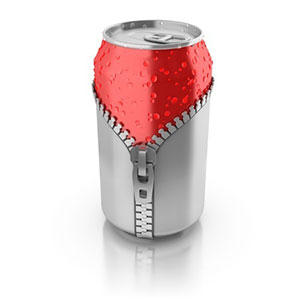 Everyone knows how important first impressions can be. Food packaging is the first impression that a consumer receives when seeing a product for the first time. Yet for some of the most iconic brands on the market, failed first impressions cause quite the stir for all the wrong reasons—a crime for both well established brand like Coca-Cola and new products like MiO have been found guilty.
Everyone knows how important first impressions can be. Food packaging is the first impression that a consumer receives when seeing a product for the first time. Yet for some of the most iconic brands on the market, failed first impressions cause quite the stir for all the wrong reasons—a crime for both well established brand like Coca-Cola and new products like MiO have been found guilty.
For reasons ranging from a misunderstanding of brand equity to a failure to understand the intended marketplace, as noted by mStoner, brands big and small can fall out of favor in a flash due to ill-conceived packaging.
The Tarnishing of Tropicana
A clear leader in orange juice companies of the U.S., Tropicana has been filling glasses at breakfast tables since 1947. An innovator in the food production industry, founder Anthony T. Rossi developed flash pasteurization in 1954 as a way to ensure a premium not-from-concentrate orange juice.
Unfortunately that innovative mindset missed the mark in 2009 when the company, now owned by PepsiCo, Inc., decided to update its packaging.
The food packaging design did away with the iconic logo featuring an orange with a straw stuck in it. In its place the brand featured a mostly white background with a curved glass of orange juice. For the orange imagery, it was reduced to a squeeze cap that was made to resemble an orange, while pushing forward the new brand message of “squeeze.” Critics were appalled, feeling that the juice company had cheapened its brand by going with a stock-like image that confused consumers who no longer associated the juice with fresh from the grove. Mere weeks after the new packaging launch, it was scrapped, save for the squeeze cap.
Not So Big and Bold with Budweiser
Another more recent beverage branding disaster has been with Budweiser.
Interestingly enough, the problem here has not been a refresh gone awry, but the failure of the company to do so.
While Budweiser is one of the most well-known American beers on the marketplace, their brand packaging is not keeping up with the modern times. Consumers have been consistently shown to dislike the iconic red and white bow-tie banner.
In a study by the market research firm Affinnova, Bud ranks as No. 1 among nine competitors in the following areas:
- Affordability
- Confident
- Energetic
- Friendly
- Fun
- Genuineness
When it comes to brand image, however, Budweiser drops to fourth place across all categories, save for genuine. A decline in U.S. sales, which were down 7.7 percent from May to April 2013, indicates that the brand packaging is indeed beginning to fall flat with consumers.
Nevertheless, VP of Budweiser North America Brian Perkins states that “With packaging innovations that keep Budweiser top-of-mind with younger drinkers, we’ve still been able to highlight our tradition, history and heritage. The bow-tie design, for instance, highlights the iconic symbol of Budweiser, and is a timeless symbol of the brand featured on wooden crates and packaging since 1956.”
Classic Coke Versus New Coke
Many of you will remember a day that has, as Coca-Cola itself has put it, a day that has “lived in marketing infamy.”
In the spring of 1985, the soda company attempted to refresh their classic brand—but they did more than just change a label. It changed the actual formula of the beverage, introducing it as the New Coke.
It only took 77 days for the Coke execs to get the message that their changes were unacceptable, forcing them to revert to their original, 99-year-old formula. Unlike Budweiser, Coca-Cola made it a point to value their consumers' opinions.
Packaging and Design Issues
Colorado packaging design firm Interact addresses several key areas that branding teams should note when creating a label or food package design. As 64 percent of consumers choose a new brand for the first time because of its packaging, getting it "right" is essential.
- You must have a recognizable central image.
- Benefits of the product must be communicated clearly
- Labels should be dynamic and evoke emotion or a story in an instant
For your next packaging design, learn from the mistakes made by the leaders in the industry as you develop a brand with a clear message.







